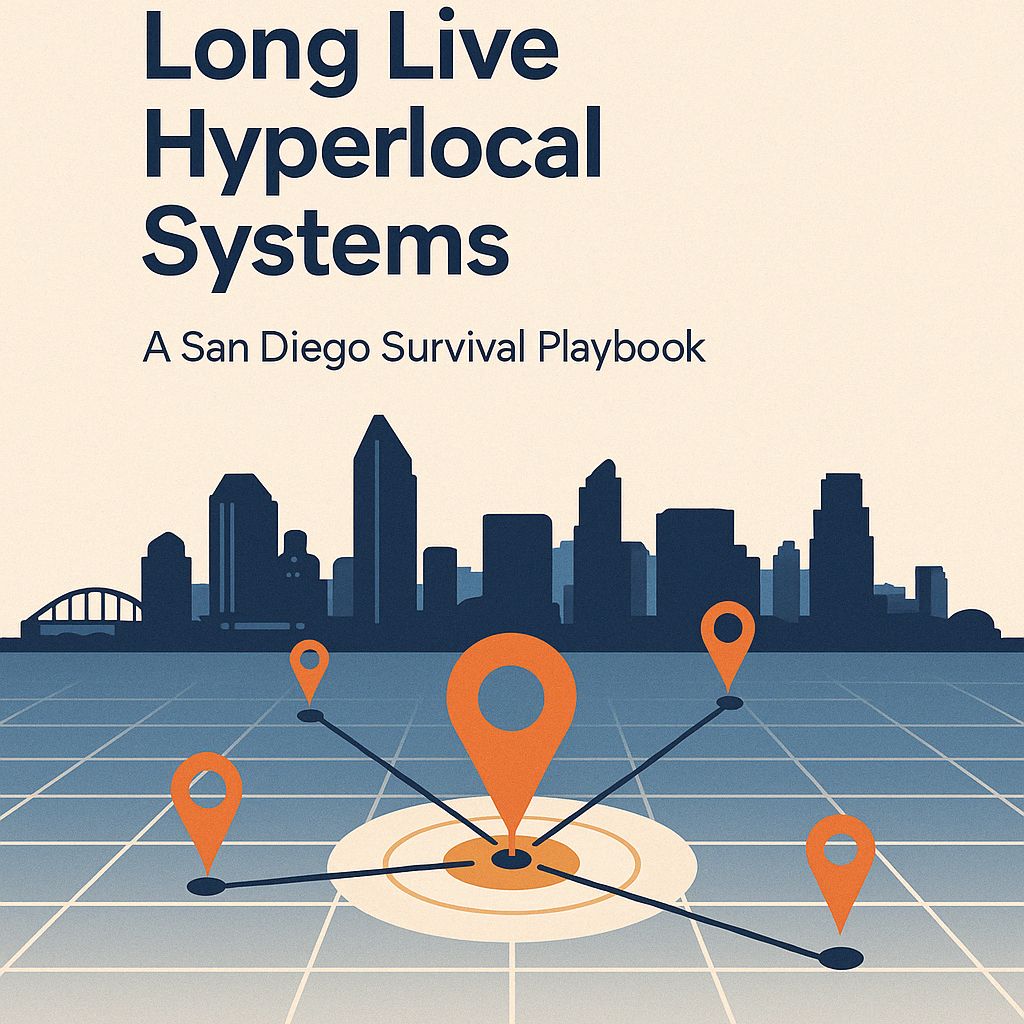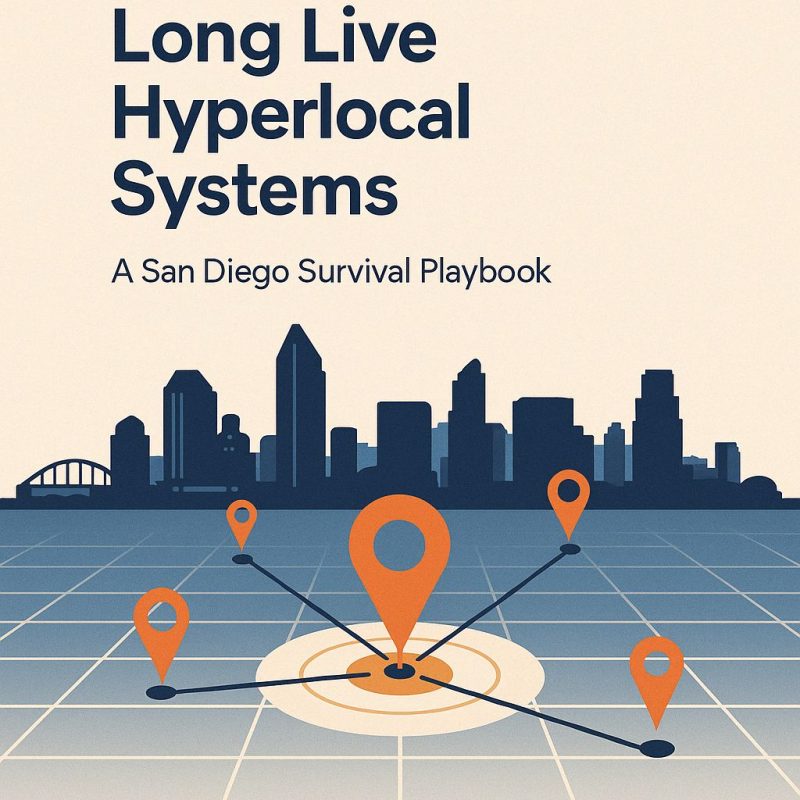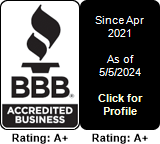If you’re a local business in San Diego and still treating SEO like a checklist of directories, citations, and city pages, you’re not competing. You’re waiting. In this city, where Torrey Pines biotech firms, Gaslamp bar owners, and North Park tattoo studios all fight for attention in radically different ways, visibility is not about being found. It’s about being chosen in the context of how people search, scroll, compare, and decide. Local SEO once helped businesses show up. Now it’s too broad, too flat, too generic. Hyperlocal systems are replacing it. They don’t aim to get you on a map. They aim to insert your brand into micro-moments of decision, where neighborhood psychology and query behavior intersect. This playbook isn’t about tricks. It’s about building structured, behavioral visibility from La Jolla to Lemon Grove. It’s how we make sure your business isn’t just seen. It’s remembered, preferred, and selected.
Why Traditional Local SEO Fails in Fragmented Markets Like San Diego
Old-school local SEO was built for stable cities with one search culture and a predictable user journey. San Diego is the opposite. This city contains surf towns, suburban families, military bases, tech corridors, tourism zones, and multilingual communities. A plumber in Encanto sees a different search profile than one in Rancho Bernardo. A family attorney in Chula Vista cannot use the same keyword strategy as one in Del Mar. Yet traditional local SEO treats them all the same. A city page here. A keyword-stuffed H1 there. That might earn a few impressions, but it does not drive action. Why? Because Google understands context. It can now detect intent type, urgency level, device use, and location modifiers in real time. If your strategy is not built to respond to how different neighborhoods behave digitally, your visibility will be cosmetic and short-lived. In San Diego, relevance isn’t a matter of proximity. It’s the result of precision.
UX module suggestion: A live scroll heatmap overlaid with regional behavior data showing how users interact with service pages in Mira Mesa vs. Hillcrest.
Understanding Behavioral Zones: When, Where, and Why People Search
You cannot win the San Diego market with city-level targeting. You have to think block by block, zone by zone. North Park behaves differently than Carmel Valley. Search volume is not the only variable. What matters is when users search, how long they take to decide, and what content types they trust. In Pacific Beach, weekend mobile queries dominate. People act fast. CTAs must be high on the page and map listings need review schema. In UTC, users are comparison shoppers. They want whitepapers, long-form pages, multi-tab clarity. In Barrio Logan, bilingual search patterns affect phrasing and voice queries. These are not SEO details. These are local UX imperatives. At Southern Digital Consulting, we begin not with keywords but with behavioral mapping. Each region gets its own traffic funnel and conversion logic. It’s how a wedding photographer in Little Italy and a medspa in El Cajon can both rank, convert, and scale using systems built for where they are, not just what they do.
CTA variation: Want a neighborhood-specific search behavior breakdown for your business? Request a custom hyperlocal query map.
The Role of Schema and Structured Data in Hyperlocal Targeting
In modern search, structured data isn’t a tech upgrade. It’s your entry fee. Google doesn’t guess anymore. It scans structured context. A GMB profile helps, but if your website doesn’t reinforce it with JSON-LD schema, entity types, and rich snippets, you’re not a candidate for durable visibility. We deploy schema that reflects your real services, not just what a plugin outputs. A criminal defense lawyer in Mission Valley gets LegalService markup with case type specificity, review aggregation, and location proof. A dental clinic in Clairemont uses MedicalClinic with opening hour modifiers, treatment list schema, and parent-focused FAQs. For every client, we also apply BreadcrumbList, FAQPage, and Organization markup—each one reinforcing different parts of your trust architecture. Structured data is how you prove what you are. Without it, Google has to guess, and your competitors win by being more legible.
UX note: Insert schema validator visual here showing before/after SERP appearance of a listing with enhanced markup.
Content Systems Built for Intent, Not Volume
Keyword volume does not equal demand. And blog content does not equal engagement. Yet most local SEO content strategies rely on both. In San Diego, content must reflect regional urgency, user type, and language nuance. A skincare clinic in Hillcrest can’t rely on “Benefits of Microneedling” blog posts. It needs an interactive treatment comparison chart, testimonials from LGBTQ+ clients, booking buttons placed high for mobile users, and a multilingual content toggle. In Coronado, a real estate agent should not be posting listicles. They need long-form seller guides, neighborhood price history widgets, and school district overlays. These are not optional. They are conversion fundamentals. At Southern Digital Consulting, we create content systems that mimic decision structure. That includes landing pages mapped to query phase, interactive tools for comparison behaviors, and internal link clusters that nudge the user to act. Nothing is written for volume. Everything is written for motion.
Micro-CTA inside content: Download our free Local Content Audit Checklist built for San Diego markets.
Hyperlocal Link Building: Earning Relevance, Not Just Authority
The biggest mistake in local SEO link building is chasing Domain Authority. In hyperlocal systems, authority is earned not through DA but through alignment. A vegan cafe in Ocean Beach benefits more from a link on a neighborhood food guide than a generic business directory. A family law firm in National City gains more from a parent blogger interview than from a national press release. We curate link targets that exist in the regional semantic cloud around your business. These might be event sites, neighborhood watch pages, real estate platforms, local sports rosters, or regional nonprofits. And we don’t chase volume. We optimize each placement’s anchor, context, and referring page signals to boost entity trust and local relevance. These links do more than pass PageRank. They strengthen your position in Google’s behavioral index.
Anchor variation tip: Always include geo-descriptive intent phrases such as “child custody attorney near Bonita” instead of simply “family lawyer.”
UX as Local Strategy: Designing for Tap, Scroll, and Hesitation
Most web design efforts focus on visuals. We focus on friction. Because in hyperlocal search, what determines conversion is not how pretty your site looks, but how easily it supports decision flow. In East Village, late-night users on mobile need thumb-sized buttons, sticky tap-to-call bars, and fast-loading headers. In Del Mar, users browsing luxury services expect calm spacing, testimonial prominence, and high-end typography. Each of these isn’t design preference. They’re UX requirements tied directly to search behavior. We build pages that reflect scroll expectations, CTA placement logic, and time-on-page data. We test modal triggers, live chat delay timing, and FAQ exposure zones. A slow-loading “Book Now” button on Safari can cost you a week’s worth of conversions. And in a city with over a million micro-hesitations per day, UX is your frontline.
Design asset idea: Screenshot carousel comparing CTA placement heatmaps across 3 San Diego neighborhoods.
From Search to Selection: Predictive Visibility in Local Funnels
Users don’t convert on first touch. Especially not in San Diego, where attention is fractured and multitasking is the norm. That’s why our strategies focus on predictive visibility. We don’t ask “Did you get the click?” We ask “Did you earn the second search?” If someone searches “top dermatologists San Diego,” visits your service page, and leaves, what happens next? If you’ve built a content series with linked treatment overviews, insurance acceptance guides, patient journey videos, and post-treatment FAQs, you show up again—both algorithmically and mentally. This structure multiplies your presence. The user doesn’t just see you again. They remember you because your funnel structure mirrored their uncertainty. Predictive visibility is about meeting user hesitation with navigational options. We do that with content bridges, retargeting flows, internal link prediction, and trust signal pacing.
Strategic CTA: Request a behavior-informed content map tailored to your exact neighborhood and service niche.
Multi-Language Local SEO in a Bilingual San Diego
Nearly 30% of San Diego’s population speaks Spanish at home. If your content is not available in both English and Spanish, you are not just missing opportunity. You are invisible to a third of the city. But multilingual SEO is not translation. It’s intent adaptation. We build Spanish content not as mirror versions but as cultural equivalents. The way a Spanish-speaking parent searches for a pediatrician in Chula Vista is structurally different from the English query. Word order, device type, and urgency shift. We build content for that behavior. That includes dual-language schema, hreflang directives, and side-by-side SERP preview optimization. And we structure the UX so that users never feel secondary. Spanish is not a tab on the footer. It’s a front-facing path. One that Google respects because it sees behavioral parity.
Implementation note: Always validate Spanish schema output for accuracy against Google’s Rich Results Test, not machine translation.
How Google’s Map Pack Prioritizes Hyperlocal Proof
The Map Pack isn’t just a list of businesses anymore. It’s a dynamic selection filtered by behavior, location, engagement signals, and profile cohesion. What gets you into the Map Pack in Poway won’t even move you in South Park. Google looks at profile completeness, review velocity, topical consistency, and how well your landing page reinforces location context. We align each of these. That means GMB posts tied to actual on-page offers, location pages with schema confirming the coordinates, and citation audits that clean up old listings. But more than that, we build local proof. Client photo uploads, region-specific reviews, business descriptions written in local phrasing. If you serve Lemon Grove but your copy reads like downtown San Diego, Google downgrades your precision. Hyperlocal systems reverse that. They encode proximity trust in every field.
Pro tip: Embed Google Map using lat-long values, not business name, to reduce ambiguity in Google’s crawler index.
Let’s Build a Local System That Doesn’t Just Rank—It Performs
Search presence in San Diego is not about getting clicks. It’s about owning behavioral entry points and guiding users to choose you with confidence. If your current SEO setup still relies on surface-level tactics, it’s time to graduate into system architecture. We don’t sell visibility. We build discoverability that survives updates, adapts to market shifts, and compounds over time. Whether you’re a wellness studio in Ocean Beach, a tax lawyer in Banker’s Hill, or a home builder in Scripps Ranch, you don’t need another audit. You need a system that matches how your market thinks. Let’s build that system together. Work with a results-driven SEO company in San Diego that doesn’t just optimize for traffic. We engineer selection.

Frequently Asked Questions (FAQ)
Q1: Why isn’t a city-wide SEO strategy enough in San Diego?
Because no two neighborhoods behave alike. A search in Pacific Beach happens on mobile and converts fast. In Sorrento Valley, users read, compare, and decide later. A one-size-fits-all approach cannot match these local tempos. Hyperlocal systems adapt by design.
Q2: How do you approach bilingual search in San Diego?
We treat Spanish not as translation, but as a separate behavior model. That means different phrasing, urgency, device use, and conversion paths. From hreflang tags to unique CTAs, each bilingual asset is built for parity in visibility and performance.
Q3: Do I need separate pages for each neighborhood I serve?
Not necessarily. We design flexible frameworks that signal hyperlocal relevance without forcing duplicate content. Some regions need distinct pages. Others respond better to dynamic elements and localized UX modules inside broader structures.
Q4: What’s the difference between visibility and selection?
Visibility means you’re on the page. Selection means the user acts on you. Hyperlocal SEO builds momentum from the first scroll to the final tap. Our systems are built to connect with how people decide—not just how they search.
Q5: Can I build this without changing my website’s design?
In many cases, yes. We integrate behavioral logic, schema, and content frameworks without visual redesign. We work with what’s already live and reshape how your site behaves, responds, and aligns with search intent.
Q6: How does content structure change between neighborhoods?
In high-urgency areas like Chula Vista, CTAs must appear fast and answer-specific questions. In comparison-heavy zones like Del Mar, we expand with buyer guides, trust markers, and delayed scroll logic. Structure always follows behavior.
Q7: What’s the first step toward building a hyperlocal system?
Audit your user patterns by region. Look at bounce rates, page depth, CTA taps, and language splits. If that feels overwhelming, we offer behavioral audits and decision-map blueprints for every major zone in San Diego.


